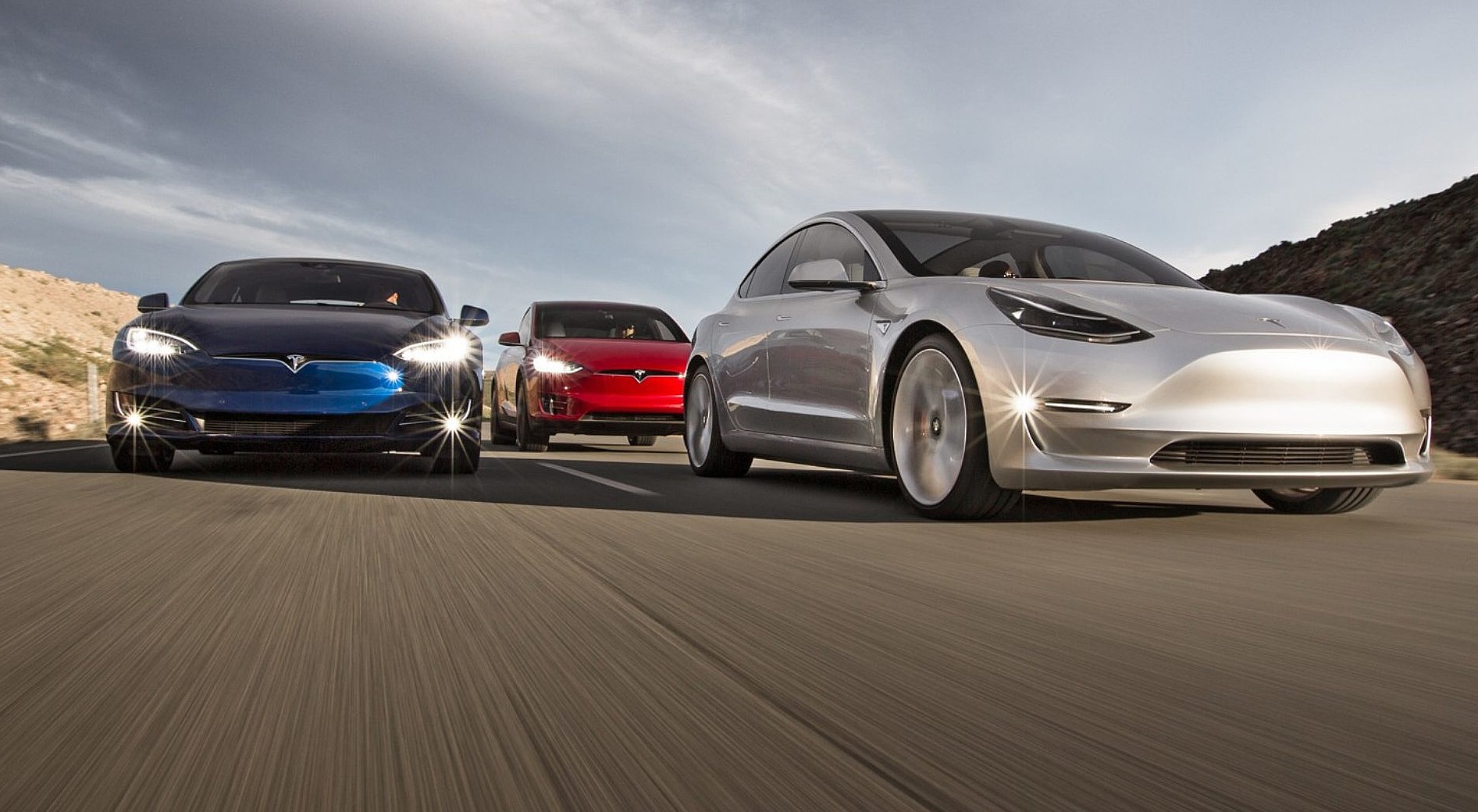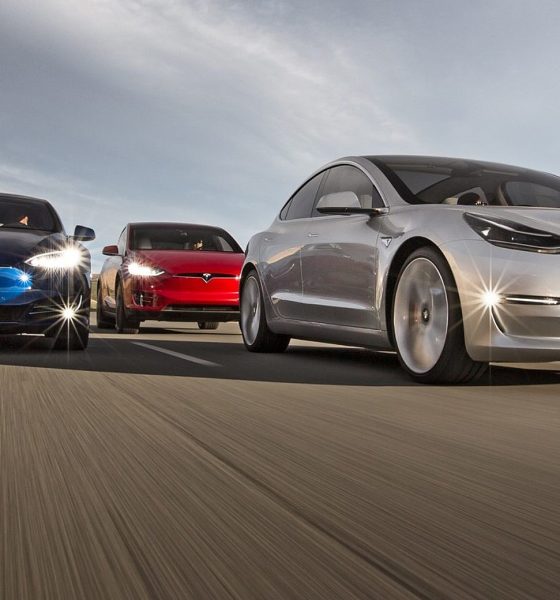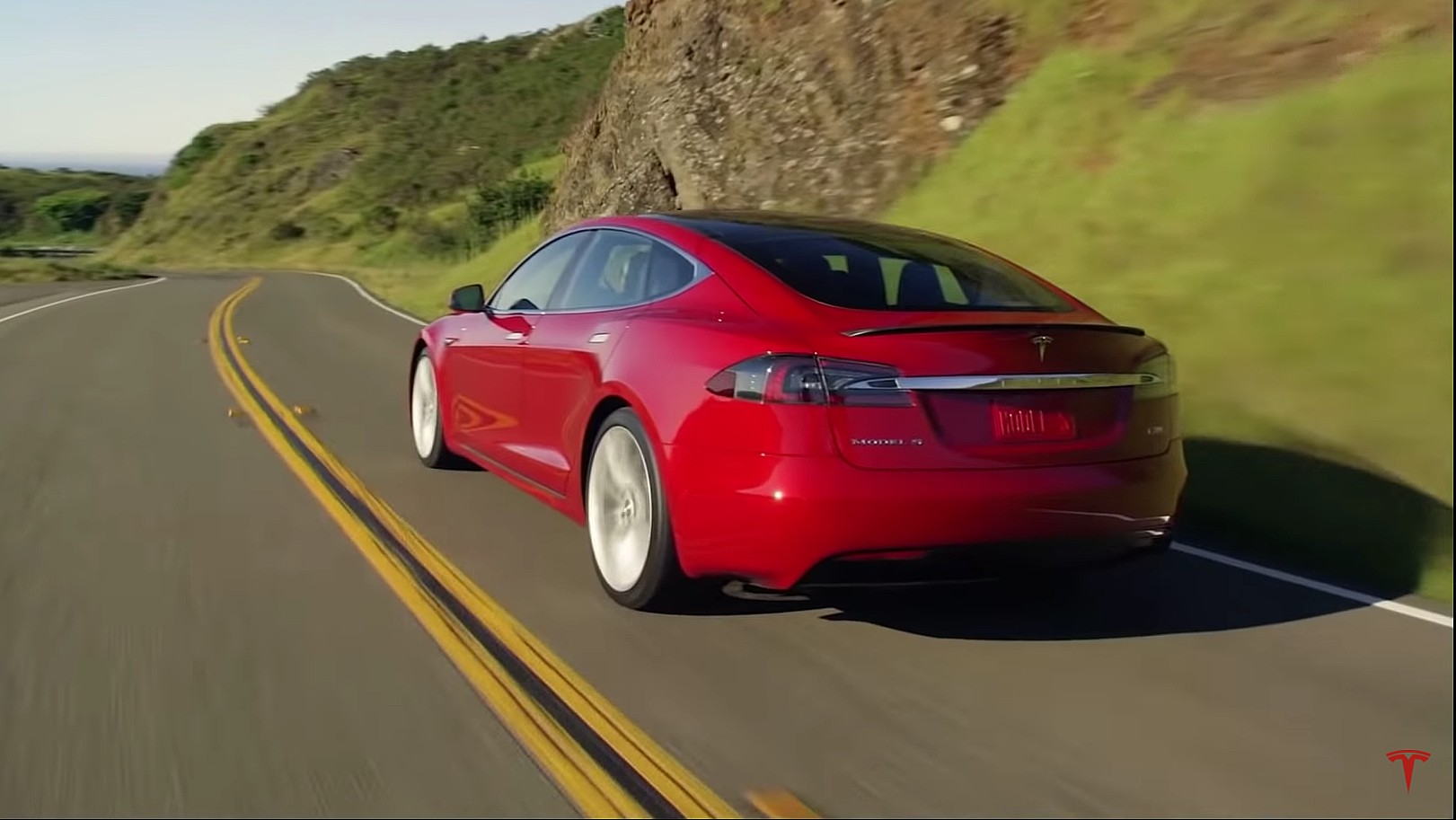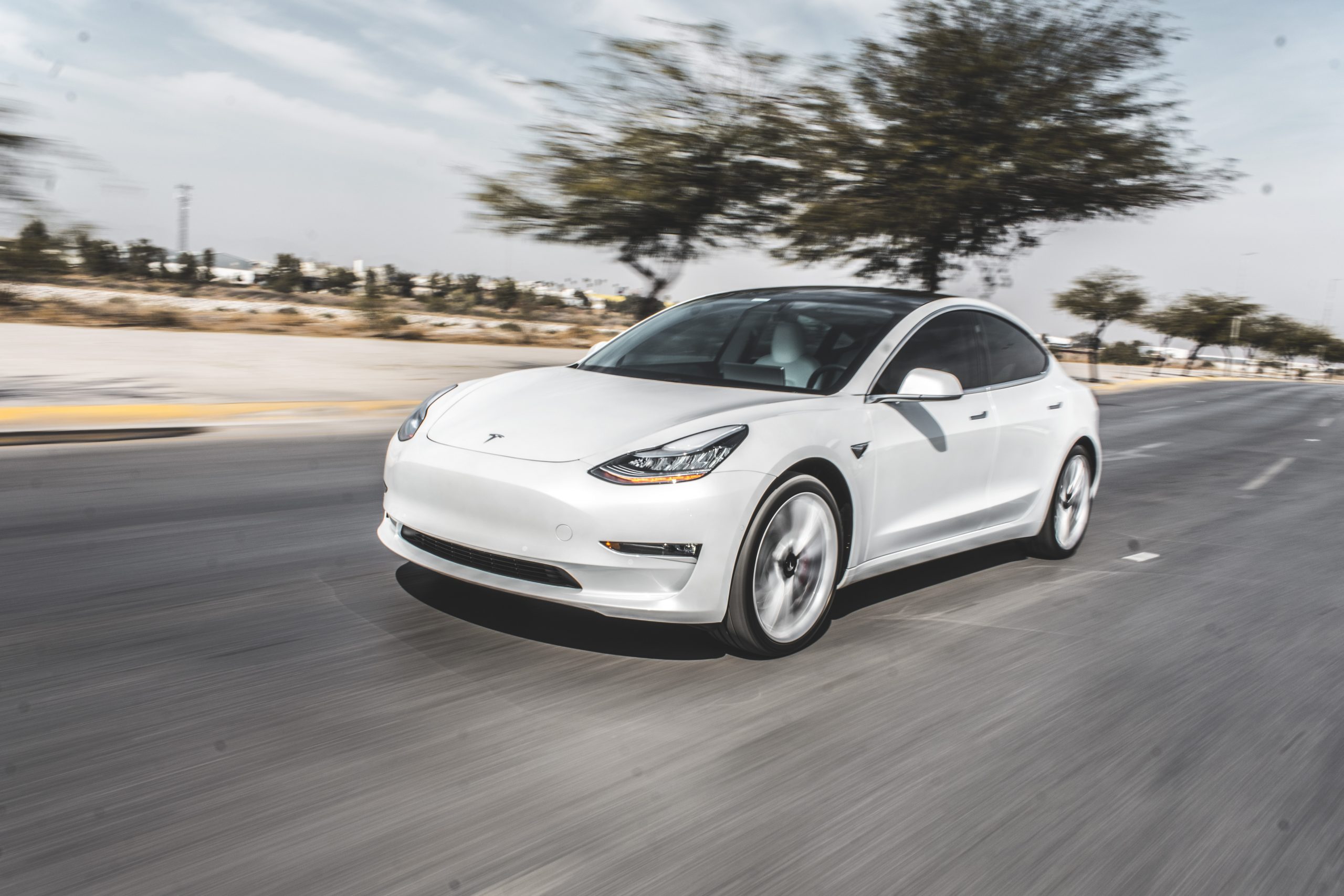

News
Tesla Model S, 3, X among ‘Top 10 American-Made’ vehicles in Cars.com list
Tesla’s Model S, Model 3, and Model X broke into Cars.com’s “Top 10 American-Made Index” list, taking three out of ten places in the motoring resource’s rankings. This was quite a debut for Tesla, as this year marks the first year that the Silicon Valley-based automaker made its first appearance in Cars.com’s rankings.
The annual survey ranks new vehicles that “contribute most to the U.S. economy” through U.S.-based factory jobs, manufacturing plants, and parts sourcing. Frequently, American automakers like Ford and Chevrolet dominate the list due to their mass-market pickups. Other popular manufacturers, like Honda, for example, have become listed more frequently in the last few years of the rankings.
Tesla, with its growing popularity and expanding fleet of mass-market vehicles, cracked the Top 10 for the first time. However, it was not just the ultra-popular Model 3 that appeared. The flagship Tesla Model S and Model X made the list as well, tying Honda for the most number of vehicles in the 2020 Top 10 rankings, USA Today reports.

The Tesla Model S, Model 3, and Model X finished third, fourth, and ninth, respectively, in the rankings. The Ford Ranger, a product of Wayne, Michigan, and the Jeep Cherokee, made in Belvidere, Illinois, edged out Tesla’s flagship sedan, which is built in Fremont, California.
According to Cars.com’s senior consumer affairs and vehicle evaluations editor Kelsey Mays, Tesla made the list this year because it was the first time the automaker supplied the appropriate information to qualify its vehicles for the rankings.
Mays added, “Tesla is the only automaker on the list to built 100% of the cars in America that it sells here.”
Cars.com told Teslarati that Tesla’s identification with Americans has grown considerably since last year. According to a survey that the automotive resource conducted, only 10% of American car buyers recognized Tesla as a “California-made” vehicle in 2019. About 18% of respondents now identify Tesla as a California-based company. However, only half of the survey’s total respondents knew that Tesla was American, and only a third of those who participated thought the Model S was built within the United States.

Mays indicated that where a car is produced is becoming a more important factor to consumers, and Cars.com created the list to highlight what vehicles are manufactured within the United States. The impact of COVID-19 on the American economy has contributed to that, and American car buyers are more focused on buying locally to support the automotive sector, which employs 9.9 million people, according to AutoAlliance.org.
“We live in a global economy, but Cars.com’s research found 70% of American shoppers consider a car’s U.S. economic impact a significant or deciding factor in their vehicle purchase,” Mays said. “The COVID-19 pandemic is increasing Americans’ desire to buy local, with 37% reporting they are more likely to buy an American-made vehicle in light of the economic disruption of COVID-19.”
Tesla’s Fremont facility employs 12,000 people, providing a sizable number of manufacturing jobs for Northern Californians. It is currently the only facility in the U.S. where Tesla builds its vehicles, but the company is looking to open a second facility in the Central United States soon.
Tesla had already reopened its Giga Shanghai production facility in mid-February by implementing a series of new health codes that would preserve the safety of its workforce. The same strategies are being used in Fremont, where Tesla is focusing on ramping up the production rates of its Model 3 and Model Y while maintaining steady build rates for the Model S and Model X.
Cars.com’s Top 10 American-Made Index list is below.
Cars.com 2020 American-Made Index top 10
- Ford Ranger (Wayne, Michigan)
- Jeep Cherokee (Belvidere, Illinois)
- Tesla Model S (Fremont, California)
- Tesla Model 3 (Fremont, California)
- Honda Odyssey (Lincoln, Alabama)
- Honda Ridgeline (Lincoln, Alabama)
- Honda Passport (Lincoln, Alabama)
- Chevrolet Corvette (Bowling Green, Kentucky)
- Tesla Model X (Fremont, California)
- Chevrolet Colorado (Wentzville, Missouri)

News
Tesla FSD fleet is nearing 7 billion total miles, including 2.5 billion city miles
As can be seen on Tesla’s official FSD webpage, vehicles equipped with the system have now navigated over 6.99 billion miles.

Tesla’s Full Self-Driving (Supervised) fleet is closing in on almost 7 billion total miles driven, as per data posted by the company on its official FSD webpage.
These figures hint at the massive scale of data fueling Tesla’s rapid FSD improvements, which have been quite notable as of late.
FSD mileage milestones
As can be seen on Tesla’s official FSD webpage, vehicles equipped with the system have now navigated over 6.99 billion miles. Tesla owner and avid FSD tester Whole Mars Catalog also shared a screenshot indicating that from the nearly 7 billion miles traveled by the FSD fleet, more than 2.5 billion miles were driven inside cities.
City miles are particularly valuable for complex urban scenarios like unprotected turns, pedestrian interactions, and traffic lights. This is also the difference-maker for FSD, as only complex solutions, such as Waymo’s self-driving taxis, operate similarly on inner-city streets. And even then, incidents such as the San Francisco blackouts have proven challenging for sensor-rich vehicles like Waymos.
Tesla’s data edge
Tesla has a number of advantages in the autonomous vehicle sector, one of which is the size of its fleet and the number of vehicles training FSD on real-world roads. Tesla’s nearly 7 billion FSD miles then allow the company to roll out updates that make its vehicles behave like they are being driven by experienced drivers, even if they are operating on their own.
So notable are Tesla’s improvements to FSD that NVIDIA Director of Robotics Jim Fan, after experiencing FSD v14, noted that the system is the first AI that passes what he described as a “Physical Turing Test.”
“Despite knowing exactly how robot learning works, I still find it magical watching the steering wheel turn by itself. First it feels surreal, next it becomes routine. Then, like the smartphone, taking it away actively hurts. This is how humanity gets rewired and glued to god-like technologies,” Fan wrote in a post on X.
News
Tesla starts showing how FSD will change lives in Europe
Local officials tested the system on narrow country roads and were impressed by FSD’s smooth, human-like driving, with some calling the service a game-changer for everyday life in areas that are far from urban centers.

Tesla has launched Europe’s first public shuttle service using Full Self-Driving (Supervised) in the rural Eifelkreis Bitburg-Prüm region of Germany, demonstrating how the technology can restore independence and mobility for people who struggle with limited transport options.
Local officials tested the system on narrow country roads and were impressed by FSD’s smooth, human-like driving, with some calling the service a game-changer for everyday life in areas that are far from urban centers.
Officials see real impact on rural residents
Arzfeld Mayor Johannes Kuhl and District Administrator Andreas Kruppert personally tested the Tesla shuttle service. This allowed them to see just how well FSD navigated winding lanes and rural roads confidently. Kruppert said, “Autonomous driving sounds like science fiction to many, but we simply see here that it works totally well in rural regions too.” Kuhl, for his part, also noted that FSD “feels like a very experienced driver.”
The pilot complements the area’s “Citizen Bus” program, which provides on-demand rides for elderly residents who can no longer drive themselves. Tesla Europe shared a video of a demonstration of the service, highlighting how FSD gives people their freedom back, even in places where public transport is not as prevalent.
What the Ministry for Economic Affairs and Transport says
Rhineland-Palatinate’s Minister Daniela Schmitt supported the project, praising the collaboration that made this “first of its kind in Europe” possible. As per the ministry, the rural rollout for the service shows FSD’s potential beyond major cities, and it delivers tangible benefits like grocery runs, doctor visits, and social connections for isolated residents.
“Reliable and flexible mobility is especially vital in rural areas. With the launch of a shuttle service using self-driving vehicles (FSD supervised) by Tesla in the Eifelkreis Bitburg-Prüm, an innovative pilot project is now getting underway that complements local community bus services. It is the first project of its kind in Europe.
“The result is a real gain for rural mobility: greater accessibility, more flexibility and tangible benefits for everyday life. A strong signal for innovation, cooperation and future-oriented mobility beyond urban centers,” the ministry wrote in a LinkedIn post.
News
Tesla China quietly posts Robotaxi-related job listing
Tesla China is currently seeking a Low Voltage Electrical Engineer to work on circuit board design for the company’s autonomous vehicles.

Tesla has posted a new job listing in Shanghai explicitly tied to its Robotaxi program, fueling speculation that the company is preparing to launch its dedicated autonomous ride-hailing service in China.
As noted in the listing, Tesla China is currently seeking a Low Voltage Electrical Engineer to work on circuit board design for the company’s autonomous vehicles.
Robotaxi-specific role
The listing, which was shared on social media platform X by industry watcher @tslaming, suggested that Tesla China is looking to fill the role urgently. The job listing itself specifically mentions that the person hired for the role will be working on the Low Voltage Hardware team, which would design the circuit boards that would serve as the nervous system of the Robotaxi.
Key tasks for the role, as indicated in the job listing, include collaboration with PCB layout, firmware, mechanical, program management, and validation teams, among other responsibilities. The role is based in Shanghai.
China Robotaxi launch
China represents a massive potential market for robotaxis, with its dense urban centers and supportive policies in select cities. Tesla has limited permission to roll out FSD in the country, though despite this, its vehicles have been hailed as among the best in the market when it comes to autonomous features. So far, at least, it appears that China supports Tesla’s FSD and Robotaxi rollout.
This was hinted at in November, when Tesla brought the Cybercab to the 8th China International Import Expo (CIIE) in Shanghai, marking the first time that the autonomous two-seater was brought to the Asia-Pacific region. The vehicle, despite not having a release date in China, received a significant amount of interest among the event’s attendees.








